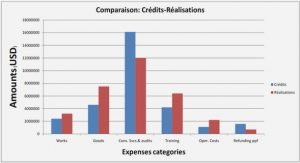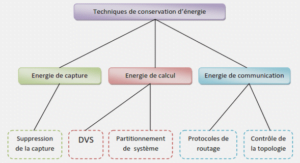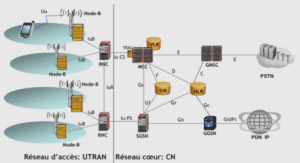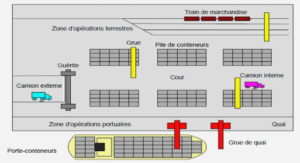Sensitivity Studies of the Reduced-Scale Numerical Model
It is common knowledge that in cold regions snow layers may accumulate on cables and conductors. This accumulation can produce major problems such as overloading the conductors and towers, galloping of cables in high wind-speed conditions, snow shedding, short-circuit due to wire sag. This in turn affects the human life security, material damage and reliability of electrical transmission lines. Some towers collapsed due to early failure and cascade collapse. Impulse loads due to sudden snow shedding can be considered as another source of trouble in power networks. Each year, numerous failures due to ice/snow storms are reported from Canada, the United States, the United Kingdom, Russia, France, Germany, Norway, Iceland and Japan, in which affect the related over head transmission networks.(ClGholamreza). The damage caused by a single wet snowstorm can necessitate the expenditure of sums on the order of 100 million dollars. In Québec, which relies heavily on electric power, electric outages lasting even a few days in harsh cold conditions have serious public safety and economic consequences (e.g., lack of heating, water supply and paralysis of several industrial and public service activities). A major snow storm in 2007 has hit eastern Canada and north-eastern areas of the US, killing many people and causing major disruption to air travel. Furthermore, transportation networks erupted into in China 2008 and USA 2011, where these snow storms caused extensive damage to a vast number of low-rise buildings, causing several deaths. The unforgiving storms had detrimental economic effects .
The natural forces exerted on snow deposit can be divided into: (a) static loads (snow weight, torsion loads from cable twist, thermal stresses resulting from temperature gradients in snow sleeve; (b) the quasi-static classification comprises mainly the effects of steady wind, snow accumulation and maintenance; (c) several cyclic effects derive from wind-induced vibrations, while natural snow shedding and forces, due to flashovers or mechanical de-icing processes, must be treated as transient dynamic loads. Exceptional events, such as conductor breakage or drop of conductor suspension assembly may also cause severe dynamic loads (Kollar and Farzaneh, 2005, Lapointe, 2003; McClure and Tinawi, 1987; McClure and Lapointe, 2003). Power transmission lines comprise four major components that are interconnected: towers, foundations, cables and interfaces such as insulators and other items of line hardware. Although most line design procedures are based on static analysis, more advanced dynamic analysis is essential to understand and predict the line transient response to complex dynamic loads.
Snow shedding from ground wires differs from ice shedding, because the process and structure of ice and snow accretion are different. The principal condition of snow growth is that, adhesive forces between the snow and ground wire surface, as well as cohesive forces between the snowflakes, are high enough to keep the snowflakes together on the ground wire. Wet snow sleeves shed naturally in some hours after their accumulation. Heating effects like Joule heating and solar radiation increase Liquid water content (LWC) of snow accretions. When snow sleeve loses its cohesion, it sheds naturally under the effect of gravity and wind, or artificially by the effect of Joule heating.
Wet snow shedding involves several feedback mechanisms and non-linear relationships between various factors, including forced, natural air convection, the shape of the snow sleeve and its surface roughness. Snow-grain morphology, the arrangement of snow grain and liquid water, are the most important parameters for predicting snow failure, or shedding. Shedding tends to cause power outages to the power network structures, thereby leading to a number of serviceability, safety and mechanical reliability issues. All these factors cause high amplitude movement of cables, increasing the possibility of little or no clearance between the adjacent cables or between cables and towers. Consideration of snow shedding problems is very important in determining the alignment of the conductors, the type of towers and the configurations of spans. The shedding involves some danger, because it causes unbalanced load on adjacent spans of the line. Thus, from the point of view of line design it is essential to know the duration of snow persistence on the cable and understanding the snow-shedding propagation phenomena.
Problem Definition
The consequences of atmospheric icing of overhead power lines are extremely important in terms of human life security, material damage and reliability of electrical transmission lines. This often creates many serious electrical and mechanical problems in the transmission network due to the high adherence of snow to substrates. The major results are overloading the conductors and towers; short circuits due to unequal sag; and galloping of cables in high-wind conditions. Galloping and other dynamic loads result in line components fatigue and damage. The impulse loads due to sudden snow shedding are another source of troubles in power networks.
This study focuses on the dynamic analysis of snow overhead transmission lines subjected to periodic loads. The periodic loads are those that result from the effect of an external load intended to remove accreted snow from the cable, or from load imbalances due to sudden snow shedding. The interest of numerical modelling of the effects of snowshedding phenomena is to assess the possible dynamic amplifications of cable tensions in the line, which are eventually transferred to supports and to check whether the amplitude of the induced motion is within the design limits of electrical clearances with the ground or with other conductors.
Experimental considerations:
(1) Horizontal component of cable end-tensions in both the static and dynamic analyses are measured by the load cell.
(2) Time histories of the vertical displacement of the cable at mid-span and end point are monitored using two digital high-speed cameras. One of these cameras also recorded the shedding process. Images are processed to yield some quantitative time history responses.
(3) Experiments are carried out in the 0°C to 1°C temperature range that most likely exists when structures are exposed to snow events.
(4) Several snow shedding scenarios were studied with variables including snow sleeve diameter and periodic load functions defined by amplitude and frequency. The initial cable sag and cable length are always constant.
Finite Element Modeling
As in previous numerical studies (Jameleddine et al, 1993; Roshan Fekr, 1995; Roshan Fekr and McClure, 1998) of ice shedding from line conductors, the commercial finite element software package ADINA (ADINA, 2004) is used in the current study to simulate the dynamic effects of snow shedding induced by a periodic excitation applied directly on a cable of a level single-span section.
Model Assumptions:
(1) Several different snow-cable modeling scenarios are mentioned in order to model snow failure propagation along the span. The cable is modeled with a uniform mesh of prestressed tension-only isoparametric truss elements relying on successful previous studies (Jameleddine et al, 1993; Lapointe, 2003; McClure and Tinawi, 1987; McClure and Lapointe, 2003; Roshan Fekr, 1995; Roshan Fekr and McClure, 1998).
(2) Snow is modeled using point-load springs with mass only to simulate its load at each point, whereas the adhesion properties are modeled using the vertical springs with only stiffness and neither mass nor damping properties.
(3) The snow failure is modeled using the failure condition depending on adhesion properties.
(4) The flexibility of the towers and their foundations is not modeled and the cable right end is assumed to be rigidly fixed, while the left end is assumed to be movable in the vertical direction.
(5) The periodic-load is simply defined by displacement profile at the suspension-point obtained from videos captured by a digital camera. Different periodic load characteristics are represented by the variation of displacement amplitude and excitation duration.
(6) Aerodynamic damping is neglected and only structural damping of the cable is considered in the numerical models. Therefore, damping is modeled by using nonlinear axial dashpot elements parallel to each cable element, relying on previous studies (Lapointe, 2003; McClure and Tinawi, 1987; Jameleddine et al, 1993; Roshan Fekr, 1995; Roshan Fekr and McClure, 1998; McClure and Lapointe, 2003).
(7) Before starting the transient dynamic analyses, mode shape analyses are conducted on a single-span cable model. The calculated mode shapes and corresponding natural frequencies are compared to those obtained from Irvine’s theory (Irvine, 1981).
(8) The time step and the mesh size are selected so as to provide adequate sampling of the excitation function and the wave, as it travels through the cable finite element mesh.
(9) Dynamic analyses start from the initial static equilibrium of the snow-covered cable. In order to avoid the stiffening effect of the flexural rigidity of the snow element on the initial static profile, the deformed cable profile is calculated beforehand using concentrated loads which simulate snow load.
Originality and Contributions to Knowledge
The present research has original contributions that will be stated as follows:
(1) A novel numerical modeling technique is developed using ADINA software, which is capable of simulating propagating and partial snow shedding on overhead cables subjected to periodic loads. This modeling approach integrates the failure criteria of snow detachment from cable depending on adhesion properties, which is investigated experimentally in CIGELE laboratory.
(2) This study is the first to use the centrifuge machine for investigating the shear adhesive strength of wet snow. Moreover, it is the first time to examine the tensile adhesion strength using this specific procedure comparable to previous researchers. In addition, this project provides a good reference concerning the relation between wet snow strengths and its physical properties (e.g., LWC), also it highlights the effect of cable surface roughness on the wet snow strengths.
(3) The numerical model is validated on a level single-span reduced-scale experimental model, where it is the first time the snow-covered cable is investigated dynamically using the proposed setup in CIGELE laboratory.
(4) The numerical model is successfully applied for simulations of level single-span real scale overhead line: a classical stranded-steel ground wire, which is the first dynamic investigation in this research area.
(5) Effects of several parameters on snow-shedding are studied, including snow thickness, amplitude, frequency of excitation and LWC for reduced scale cable experimentally and numerically. Concerning the real scale model, some other parameters are investigated such as span length, load position and damping ratio.
LITERATURE REVIEW
Mainly five types of icing may deposit on structures: glaze, soft rime, hard rime, wet snow, dry snow and hoar frost (Poots, 1996). Typical temperature during wet snow events is slightly above freezing point of water (0°C). The occurrence, severity and type of snow depend largely on temperature, wind speed and water droplet size. Snow shedding from the conductors, which is classified as a type of mass reduction, could be a source of structural damages, failure or even cascading collapse of towers. This mass reduction can be caused by some physical mechanisms: snow melting and mechanical snow breaking. In this chapter, the snow shedding phenomenon and factors influencing it will be discussed in more detail. The first part of this chapter reviews the essential results relating to the snow structure, metamorphism, water saturation and thermodynamic aspects. In the second section, the snow accretion studies are investigated. Adhesion properties of wet snow will review the icing adhesion and cohesion tests. Finally, the last section will focus on the mechanical properties of snow. The main objective of this chapter is to introduce the properties of wet snow, to learn what causes snow shedding and to understand the adhesion properties.
Wet Snow Metamorphism and Thermodynamic Balance
Snow Structure
Snow is a cellular form of ice in which the individual ice crystals of snow are bonded together. Gibson et al. (1997) reported the mechanical properties of cellular solids in details. Cellular solids can be either closed-cell form or open-cell form such as Sponge. Snow is considered as an open-cell polyhedral type (Petrovic, 2003).
Snow Metamorphism
Colbeck and Denoth (1973, 1979, 1982, 1997) are the most important contributors in understanding the microstructure of snow. Denoth (1982) investigated the role of snow LWC in details. Colbeck (1973) mentioned that water exists in wet snow in three forms determined by the amount of water it contains as follows:
a- Capillary area: The water content is small and exists between ice particle constrictions, which corresponds to low LWC.
b- Catenary area: Water appears around ice particles.
c- Reticulation area: When water reaches to 14% by volume, the ice particles are completely covered with water and the gap is distributed in the water as isolated bubbles (Denoth, 1986, Colbeck ,1982).
The rapid metamorphosis of snow at positive air temperature was published by Wakahama et ai (1977) and theorized by Colbeck (1973). The first photos of such grain clusters were presented by Colbeck and Ackley (1982). Wet snow is the result of the rapid metamorphosis of dry snow formed at negative temperature into super-cooled clouds. When the snowflakes penetrate an air layer at positive temperature, the dry snowflakes consisting of millimetric hexagonal ice crystals that were collected under weak mechanical bonding, begin their metamorphosis by rounding their crystalline shape. Once the snow is fully exposed to air-snow thermal exchanges, the metamorphosis is rather rapid.
The metamorphosis proceeds as follows: a liquid phase occurs over the ice, where at that moment the hexagonal crystals round out, shorten and turned into agglomerates of ice granules, then weltering in their own melting water, surrounding by trapped air bubbles (Dalle, 2011). This metamorphosis transforms the weak mechanical bonding of dry snowflakes into strong capillary bonding of wet snow granules, as described by (Wakahama, 1965) and theorized by (Colbeck, 1973, 1979). The temperature of metamorphosis is generally located between 0°C and 2.5°C (Grenier and Admirât, 1984; Dalle, 1984). Once the air temperature exceeds 3°C, the wet snow turns into water droplets. When the heat exchanges are restricted (low wind speed <1 m/s, air temperature close to 0.1 °C and snowfall intensity >10 mm/h), the wet snow presents half-transformed snow with density < 100 kg/m3 , low LWC < 5% and many air bubbles. Conversely, if the heat exchanges are very active (wind speed =10 m/s, air temperature = 2°C and low snow fall < 2 mm/h), the wet snow material considered as a fully transformed-snow (density 500 kg/m3 , LWC > 40% and few air bubbles) (Dalle, 2011).
Liquid Water Content Concept
The variables used to describe wet snow accretions are snow thickness, density, overload and liquid water content (LWC) (Roberge, 2006). Thus, LWC is a main factor in wet snow studies. Measurements of liquid water content are expressed by volume (water volume, ice volume and porosity, which usually requires a separate measurement of density (Colbeck et al., 1990). Several methods are used today for field measurements to determine liquid water content, e.g., hot (melting) and cold (freezing) calorimetry, dilution and dielectric measurements.
Denoth (1982) defines the amount of water saturation as the extent (%) to which liquid water fills the available pore space in the snow matrix. Wakahama (1977, 1979), Poots (1996), Admirât (1986, 1988, 1990) and Sakamoto (2000, 2005) all express the LWC as the mass percentage of liquid water in a total mass of wet snow, as a percentage (%LWC by mass).
Accreted snow can melt by a raise in air temperature, by solar radiation or energizing the wire. The liquid water flows down to the bottom (this happened for density less than 0.6 kg/m3); once the bottom becomes saturated with liquid water and appears to be transparent, snow shedding then occurs. When snow accretion forms in a cylindrical sleeve, it hardly drops off the wire (Sakamoto, 2005).
Heat Balance
Grenier et al. (1986) studied the heat balance of wet snow sleeve during 1980’s and established a model of cylindrical accretion process, which includes precipitation rate, collection efficiency (the fraction of droplets approaching a surface), the influence of wind speed and air temperature. This model was validated using wind tunnel experiments and field observations. The model was used to predict accretion diameter, snow density and LWC. The cooling and heating effects are identified as follows:
1- Qa: heat supplied or removed by forced convection during accretion. When air temperature is above freezing, heat is supplied to snow. Whereas after the accretion, air temperature drops below the freezing point, heat is being removed.
2- Qevap- heat removed by source of evaporation at the accretion surface (neglected).
3- Qcond: heat supplied to the surface by the condensation.
4- Qmeit- heat removed by the melting process of accreted snow.
5- Qjouie- heat supplied by Joule effect if cable carries an electric current.
CONCLUSION
A failure criterion for wet snow deposits on transmission line cables was examined, where this failure criterion depends on tensile adhesion varying with snow LWC. The measurements of tensile and shear adhesion strengths were performed, experimentally at CIGELE Laboratory of University of Quebec at Chicoutimi and applied into a numerical model. The dynamic experiments consist of three main stages: firstly, accumulating snow on a reduced-scale (4.14-m) single span of flexible cable, then monitoring its response to the application of a periodic load and finally, observing the resulting snow-shedding process. The numerical modeling approach was developed using the finite element commercial software ADINA, following the successful application of the snow failure criterion on the reduced scale model, then it was validated by comparing to experimental results. The same modeling approach was applied to a single-span of 200 m and 470 m of real overhead conductor, which considered as an application.
|
Table des matières
CHAPTER 1: INTRODUCTION
1.1. Overview
1.2. Problem Definition
1.3. Objectives
1.4. Methodology
1.4.1. Laboratory Experiments
1.4.1.1. Adhesion Test Description
1.4.1.2. Dynamic Test Description
1.4.2. Finite Element Modeling
1.5.Orginality and Contributions to Knowledge
1.6. Thesis Structure
1.7. Conclusion
CHAPTER 2: LITERATURE REVIEW
2.1. Introduction
2.2. Wet Snow Metamorphism and Thermodynamic Balance
2.2.1. Snow Structure
2.2.2. Snow Metamorphism
2.2.3. Liquid Water Content Concept
2.2.4. Heat Balance
2.2.5. Regimes of Water Saturation
2.2.5.1. Wet Snow in the Pendular Regime
2.2.5.2. Wet Snow in the Funicular Regime
2.3. Snow accretion
2.3.1. Experimental observations
2.3.1.1. Types of Snow Accretion
2.3.2 Field Observations
2.3.2.1. Mechanisms of Accretion
2.3.3 Wet Snow Accretion Models
2.4. Wet Snow Shedding
2.4.1. Shedding Modes
2.4.2. Forced Shedding
2.4.3. In-situ Observations of Wet Snow Shedding
2.4.4. Experimental Observations of Wet Snow Shedding
2.4.5. Previous Shedding Models
2.5. Adhesion for Wet Snow
2.5.1. Cohesion and Adhesion Definitions
2.5.2 Adhesion Mechanisms
2.5.3 The Main Adhesive Forces
2.5.4 Previous Icing Adhesion and Cohesion Tests
2.5.4.1. Cohesion Tests
2.5.4.2. Adhesion Tests
2.6. Mechanical Properties of Snow
2.6.1. Compressive Strength
2.6.2. Tensile Strength
2.6.3. Shear Strength
2.6.4. The Relation Between Density and Other Material Properties of Snow
2.7.Conclusion
CHAPTER 3: EXPERIMENTAL STUDY
3.1. Introduction
3.2. Adhesion Experiments
3.2.1. Shear Adhesion Tests
3.2.1.1. Cold Room Laboratory
3.2.1.2. Equipments
3.2.1.3. Shear Test Procedure
3.2.1.4. Shear Test Results
3.2.2. The Tensile Adhesion Tests
3.2.2.1. Equipments
3.2.2.2. Tensile Test Procedure
3.2.2.3. Tensile Test Results
3.2.2.4. Comparison with the previous tensile strength investigation
3.3. Dynamic Experiments to Simulate Snow Shedding
3.3.1. Introduction
3.3.2. Icing Laboratory
3.3.3. LWC and Density Measurements
3.3.4. The Level Single-Span Reduced-Scale Conductor Model
3.3.4.1. Periodic Impact Generator
3.3.4.2. Measuring Devices and Data Acquisition System
3.3.5. Dynamic Test Procedure
3.3.5.1.Wet Snow Sleeve Moulding
3.3.6. Dynamic Test Results
3.3.6.1 .Suspension- Point Displacement
3.3.6.2. Periodic Impact Characteristics
3.3.6.3. Time History of Cable End-Tension
3.3.6.4. Mid-Span Jump and Rate of Shedding
3.4 Conclusion
3.4.1. Shear and Tensile Tests conclusions
3.4.2. Dynamic Tests conclusions
CHAPTER 4: NUMERICAL MODELING AND VALIDATION
4.1 Introduction
4.2.Numerical Modeling Approach
4.2.1. Cable Modeling
4.2.2. Cable Damping
4.2.3. Accreted Snow Modeling
4.2.4. Snow Failure Modeling
4.2.5. Initial static Equilibrium
4.2.6. Dynamic Analysis
4.2.7. Numerical Considerations
4.2.8. Modeling Limitations
4.2.8.1. Towers and Their Foundations
4.2.8.2. Damping
4.2.9. Eigen-value Analysis
4.3. Sensitivity Studies of the Reduced-Scale Numerical Model
4.3.1. Model Sensitivity to Finite Element Mesh Size
4.3.2. Model Sensitivity to Damping
4.3.3. Sensitivity Conclusion Ill
4.4. Comparison Between Numerical and Experimental Results Ill
4.4.1. Overview Ill
4.4.2. Rate of Shedding and Time Histories of Cable Response
4.4.2.1. Effect of Period of Excitation (Acceleration Peaks)
4.4.2.2. Effect of Snow LWC Values
4.4.2.3. Effect of Excitation Amplitude
4.4.2.4. Effect of Snow Sleeve Diameter
4.4.2.5. Effect of Changing Snow LWC for Small Sleeve
4.4.2.5.1. Partial shedding for Adhesion Force4N
4.4.2.5.2. Partial Shedding for Adhesion Force 6 N
4.4.2.6. Effect of Excitation Amplitude for Small Sleeve
4.5. Conclusion
CHAPTER 5: APPLICATION OF THE NUMERICAL MODEL TO REAL- SCALE OVERHEAD CONDUCTOR
5.1. Introduction
5.2. Modeling Overview
5.3. EDF Overhead Conductor 470-m
5.3.1. Main Case Study
5.3.2. Effect of Adhesion Force
5.3.3. Effect of Load Position
5.3.4. Effect of Damping Ratio
5.4. EDF Overhead Conductor 200-m
5.4.1. Main Case Study
5.4.2. Effect of Adhesion Force
5.4.3. Effect of Changing Load Position
5.4.4. Effect of Damping Ratio
5.5. Hydro-Quebec Overhead Conductor 200-m
5.6. Conclusion
5.6.1. EDF Cable of 470 m long
5.6.2. EDF of Cable of 200 m long
5.6.3. Hydro-Quebec cable of 200 m long
CHAPTER 6: CONCLUSION
![]() Télécharger le rapport complet
Télécharger le rapport complet






